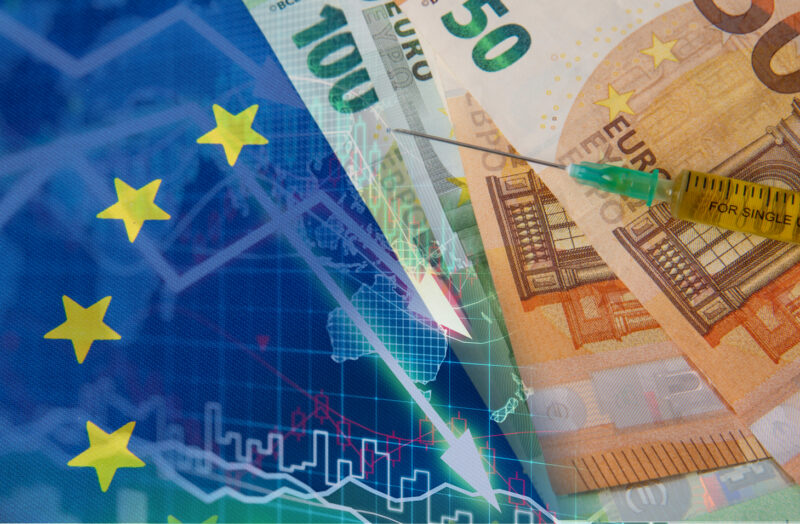[Ed Note: The following is an excerpt from my book How the Euro Dies, which I’ve decided to republish in anticipation of a return to the European sovereign debt crisis.]
In 1992, something called the Unholy Trinity came for Britain.
After wild economic policy saw interest rates raised from 10% to 12% to 15% within hours, Chancellor Norman Lamont finally abandoned the European Exchange Rate Mechanism (ERM) on Wednesday 16 September. The pound crashed 17%, and that date became known as Black Wednesday.
The infamous hedge fund manager George Soros was ready for it. He broke the Bank of England (BoE) by betting the pound’s fixed exchange rate would collapse, and famously bagged a billion dollars for being right. Britons bagged a recession. House prices crashed, too.
I’m not surprised Soros was there to profit. After all, the 1992 crash was just a repeat of the same crisis in the 1970s, when Soros’ career first blossomed. Having experienced the power of something called the Unholy Trinity in the 1970s, he certainly knew what was coming in 1992.
And the same thing happened again in 1997, when he was singled out by the Malaysian prime minister as a “rogue speculator”, thanks to his profits from the Asian financial crisis.
Today, we’re faced with the same situation. The same threats. The same opportunities. And for the same reasons. The Unholy Trinity returns.
Even Soros is back. Although he now uses his gains from betting against currency pegs to support propaganda in favour of the euro – a form of currency peg…
But what about you? Would you like to profit handsomely from another seemingly impossible breakdown of a currency system? Or would you like to see your savings and investments crushed under the weight of the system’s failure?
Because, this time, it’s going to be far worse.
Britain was lucky in 1992 and the 1970s. Lucky, because we weren’t in the eurozone. We still had the pound. So our departure from the ERM and fixed exchange rates didn’t cause much trouble.
In fact, in many ways, things improved dramatically for Britain after we left the ERM and floated the pound. The number of home repossessions peaked in 1991 before plunging once we left the ERM. From 0.77% of mortgages in 1991 to 0.07% within 12 years. Wouldn’t Greece and Italy like a tenfold improvement in their debt delinquencies today!
It’s also worth mentioning that Sweden had much the same experience as Britain, even allowing its currency to float again the same year. And so the Swedes rejected the euro in a referendum 11 years later. They knew how valuable it is to have your own currency.
But let me ask you something. What if we hadn’t been able to leave the ERM in 1992? What if we were stuck inside the euro instead?
By the time we finally did escape, the ERM was known as the Eternal Recession Machine in Britain. So, there’s your answer. An eternal economic crisis. Not unlike what southern Europe is experiencing now. In fact, exactly like it.
Europe’s Black Wednesday is coming
What completely mystifies me is why Europe didn’t heed the blatantly obvious warning of Britain’s Black Wednesday. Or the struggles of other nations that went through the ERM and abandoned it. Not to mention the economic mess of pegged currencies both in the 1970s and during the Asian financial crisis. In fact, as you’ll discover in the book, monetary unions have a success rate of close to zero. Particularly in Europe.
But European politicians ignored this. The euro became part of a political project. And politicians never listen to economists or history. That’s why they repeat the same mistakes. Because those mistakes always sound good at first. And they do at least get you elected…
But you can’t wish away economics with politics. As much as European politicians decree the euro to be a good thing, it continuously proves them wrong. Putting countries with completely different economies into one monetary sack is downright dangerous. Their economies cannot adjust to booms or recessions. The exchange rate and monetary policy can’t rebalance things. This means a currency peg or a common currency such as the euro guarantees severe economic instability and divergence between nations – and that’s the opposite of what the euro is supposed to do.
It took Britain two crises – one in the 1970s and one in the 1990s – to learn this the hard way before we abandoned Europe’s monetary project and stuck with a floating pound. Asian countries were forced to abandon their currency pegs to prevent the Asian financial crisis from repeating too.
Instead of heeding these warnings, Europe went right ahead with its project, dragging the euro into being. And now, southern Europe finds itself a victim of Europe’s endless recession machine, and has just changed its name to the euro.
The good news is that this presents you with the same opportunity that Soros had in 1992, 1972 and 1997. Only this time it’s the euro itself that will fail, not just a currency peg like the pound’s.
[Tomorrow, I’ll explain what the Unholy Trinity is and how it applies to the euro.]

Nick Hubble
Editor, Fortune & Freedom



